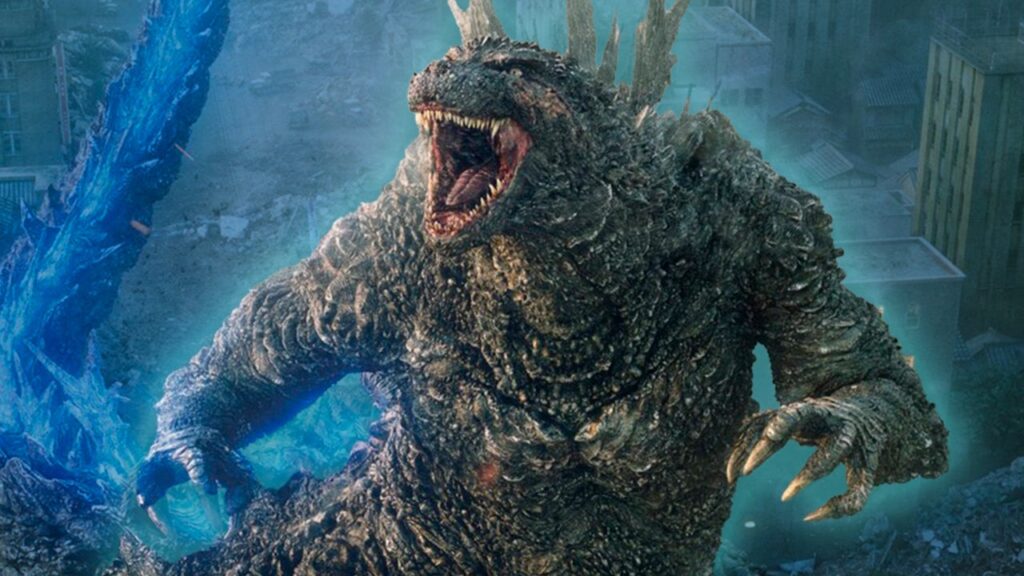Godzilla -1 represents a significant shift for the Godzilla franchise, taking the iconic monster back to its original roots of destruction, terror, and societal fear. After decades of varying tones—from campy monster showdowns to action-packed blockbusters—Godzilla -1 chooses to return to the darker, more serious origins that first defined the series. Set in post-World War II Japan, this film explores the devastation wrought by Godzilla, not only in terms of physical destruction but also as a metaphor for trauma and human frailty.
This article takes a deep dive into Godzilla Minus One, examining how it reclaims the tone of the original 1954 Godzilla and what it means for the future of the franchise.
The Origins of Godzilla: A Symbol of Destruction and Trauma
When Godzilla first debuted in 1954, it was much more than a monster movie—it was a cinematic expression of post-war anxieties in Japan. Created in the aftermath of the atomic bombings of Hiroshima and Nagasaki, Godzilla symbolized nuclear devastation, a reminder of the destruction that modern technology could unleash upon humanity. The original film was bleak, focusing on themes of loss, helplessness, and the uncontrollable nature of such destructive forces.
Over time, however, the franchise shifted in tone. Godzilla became less a symbol of terror and more a pop-culture figure, even transitioning into a protector of Earth in later films. While these movies found success and introduced the monster to younger audiences, they deviated from the original vision of Godzilla as a dark, unstoppable force.
Godzilla Minus One: Returning to the Darkness
Godzilla Minus One marks a deliberate return to the serious, fear-inducing origins of the character. Set in the immediate aftermath of World War II, the film focuses on a Japan still grappling with the consequences of the war, devastated by bombings and the economic collapse. Into this fragile, broken world comes Godzilla, a creature whose appearance feels like the final, crushing blow to a nation already on its knees.
The decision to set the film in this period allows Godzilla Minus One to echo the somber tone of the original 1954 film. The focus is once again on Godzilla as an allegory for uncontrollable destruction, with the creature representing not only nuclear power but also the overwhelming sense of despair that accompanies such a catastrophe.
A Bleak Setting: Post-War Japan as a Backdrop
One of the most striking aspects of Godzilla Minus One is its setting. The film places the viewer in the ruins of post-war Japan, where the wounds of conflict are still fresh. Cities lie in ruins, survivors struggle with loss and guilt, and hope feels like a distant memory. In this environment, Godzilla’s arrival seems almost inevitable—a final embodiment of destruction in a world already undone.
This setting is key to the film’s tone. The characters in the film are dealing with their own personal losses, and Godzilla’s rampage mirrors the internal devastation they feel.
The Return of Godzilla as a Force of Nature
In many recent Godzilla films, the monster has been portrayed as a kind of reluctant hero or anti-hero, a protector of the Earth who fights off even greater threats. In Godzilla Minus One, that interpretation is completely discarded. Here, Godzilla is no savior—he is pure destruction, a walking cataclysm that brings death and despair wherever he goes.
This portrayal of Godzilla as an unstoppable force of nature is much closer to the original vision of the character. In Godzilla Minus One, there is no reasoning with or stopping the creature. Humanity’s attempts to fight back are futile, underscoring the theme that some forces are beyond human control. The film leans into the fear and awe that Godzilla inspires, reminding audiences of the monster’s roots as a symbol of nuclear terror.
Character-Driven Drama: Humanity’s Struggle
Despite Godzilla’s overwhelming presence, the human element of Godzilla Minus One remains central to the story. The film follows a group of survivors who must not only contend with the monster’s devastation but also their own personal struggles in the aftermath of the war. This focus on character development helps ground the film, making the destruction feel more personal and emotionally resonant.
In particular, Godzilla Minus One explores themes of guilt, redemption, and survival. The main characters are ordinary people—soldiers, civilians, and survivors—each dealing with their own trauma. Godzilla’s arrival forces them to confront their fears and find strength in a seemingly hopeless situation. This human element elevates the film from a simple monster flick to a meditation on loss and resilience.
Visual Effects and Cinematic Techniques
Godzilla Minus One also benefits from modern visual effects, which allow for a more realistic and terrifying portrayal of the titular monster. The design of Godzilla in this film is darker and more menacing than in recent incarnations. His movements are slower, more deliberate, as if every step brings with it the weight of annihilation. This Godzilla feels ancient, unstoppable, and filled with raw power.
Cinematically, the film makes use of a grim color palette and stark lighting to emphasize the desolation of the world. The sound design, too, contributes to the film’s immersive atmosphere, with Godzilla’s iconic roar reverberating ominously throughout.
Themes of Godzilla Minus One
The central themes of Godzilla Minus One reflect the emotional and physical toll of war, destruction, and survival:
1. Destruction and Rebirth
At its core, Godzilla Minus One deals with the theme of destruction—both on a personal and societal level. Godzilla’s arrival in a war-torn world emphasizes the idea of compounding devastation, but through this destruction, there is also the possibility of rebirth and rebuilding.
2. Trauma and Resilience
Much like the original Godzilla, Godzilla Minus One explores the emotional scars left by conflict. Their journey is not just about physical survival but also about overcoming the psychological toll of trauma and finding the will to move forward.
3. The Power of Nature
Godzilla is once again portrayed as a force of nature, something that humanity cannot control or stop. This theme reflects on the broader idea that there are forces beyond human understanding, and that our attempts to dominate or harness them often lead to disaster. Godzilla represents the unpredictability and uncontrollable power of nature itself.
Conclusion:
Godzilla Minus One signals a bold return to the franchise’s darker origins, offering a fresh take on the monster that once symbolized nuclear devastation. By setting the story in post-war Japan and focusing on themes of destruction, trauma, and survival. This film explores the devastation wrought by Godzilla, not only in terms of physical destruction but also as a metaphor for trauma and human frailty.
FAQs
1. How does Godzilla Minus One differ from other Godzilla films?
Godzilla Minus One returns to the darker, more serious roots of the original 1954 Godzilla. Unlike recent films that focus on spectacle and monster battles, this movie emphasizes emotional depth, destruction, and humanity’s struggle for survival.
2. Is Godzilla Minus One set in a specific time period?
Yes, Godzilla Minus One is set in post-World War II Japan, a period of great devastation and rebuilding for the country. This setting adds emotional weight to the story, as Godzilla’s destruction mirrors the trauma of the war.
3. What themes does Godzilla Minus One explore?
The film explores themes of destruction, trauma, survival, and the uncontrollable power of nature. It reflects on the emotional and physical toll of war and catastrophe, much like the original Godzilla.
4. How is Godzilla portrayed in this film?
In Godzilla Minus One, Godzilla is portrayed as an unstoppable force of destruction, a metaphor for uncontrollable disasters.







